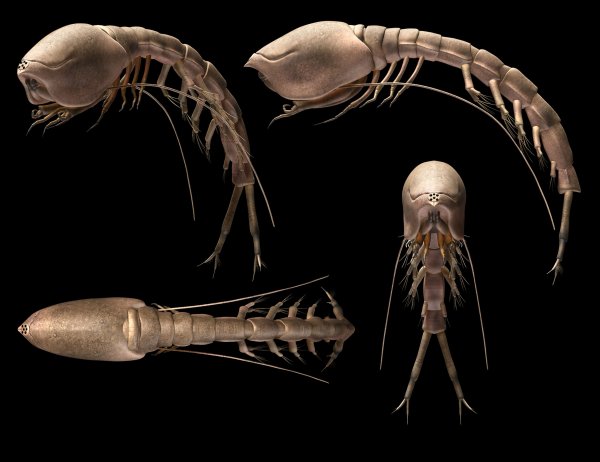A new species of comma shrimp that lived during the mid-Cretaceous period, between 95 and 90 million years ago, has been identified from well-preserved fossils found in Colombia. Named Eobodotria muisca, the ancient crustacean bridges an approximately 165-million-year gap in the fossil record of comma shrimps (order Cumacea).
Eobodotria muisca bridges an approximately 165 million year gap in the cumacean fossil record. Image credit: Javier Luque.
Comma shrimps, also known as hooded shrimps, are tiny marine arthropods with unusual comma-shaped bodies.
Even though they are an abundant group, with nearly 2,000 species distributed throughout the globe, they have one of the poorest fossil records among crustaceans.
“Comma shrimp are small, delicate crustaceans with one of the poorest fossil records among marine arthropods,” said Dr. Javier Luque, a postdoctoral researcher at Yale University.
“There are eight families, over 165 genera and close to 2,000 species of living comma shrimp, and despite living in soft sediments with high potential for fossilization worldwide, none of them have known fossils,” he added.
“This means that we had no idea about when modern comma shrimp evolved, until now. Our new fossil discovery is one of a kind and represents the oldest modern comma shrimp known, and a first for the Neotropics.”
Dr. Luque and colleagues found over 500 individuals of Eobodotria muisca at the site of Boyacá in Colombia.
The 6-8-mm-long specimens were preserved in such detail that even their eyes, antennae, mouthparts, legs, guts and hairs were easy to distinguish.
“These fossils are of hundreds of adult males, which likely died suddenly in the water column while swarming during mating, falling slowly through the water with little or no damage. This left them in truly stunning condition,” said Professor Sarah Gerken, from the University of Alaska Anchorage.
The excellent condition of the fossils allowed the team to create a 3D reconstruction of what they might have looked like while alive.
“The key morphological features that define cumaceans are simply missing from the other fossils. The 160-million-year-old Jurassic species from France is a true cumacean, but the few specimens known are not preserved in detail to elucidate any family relationship or even determine their sex,” Professor Gerken said.
“Our new fossil from Colombia, represented by hundreds of individuals, is the first confirmed fossil that belongs to a living family of comma shrimp, the Bodotriidae, and dramatically extends the fossil record of the family for nearly a hundred million years,” Dr. Luque said.
Source: sci.news












